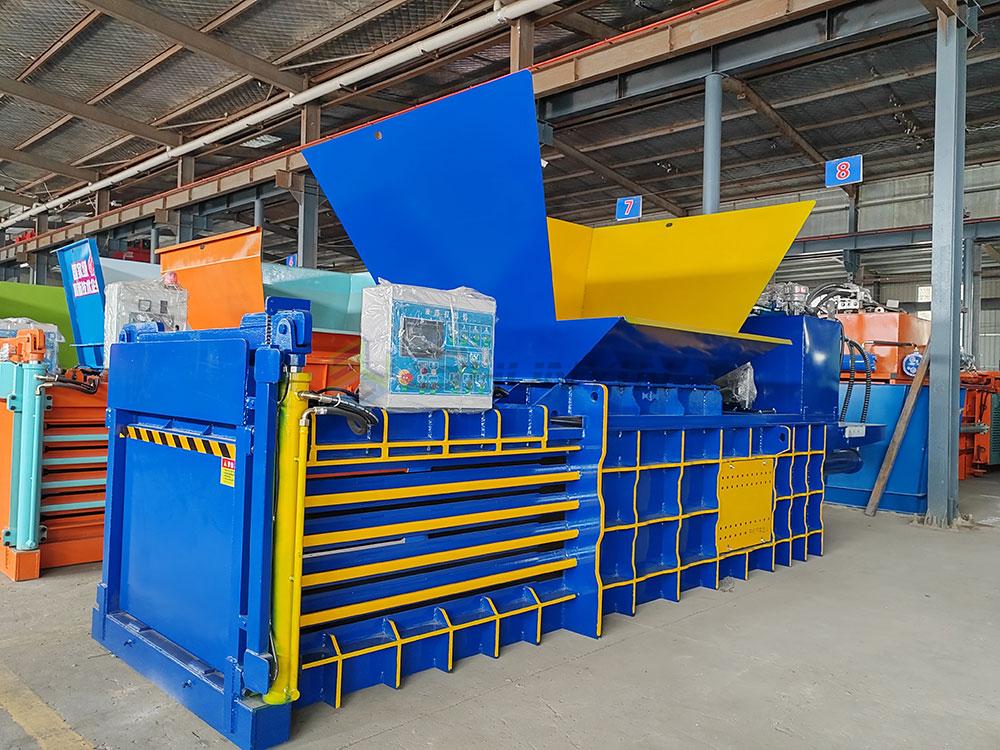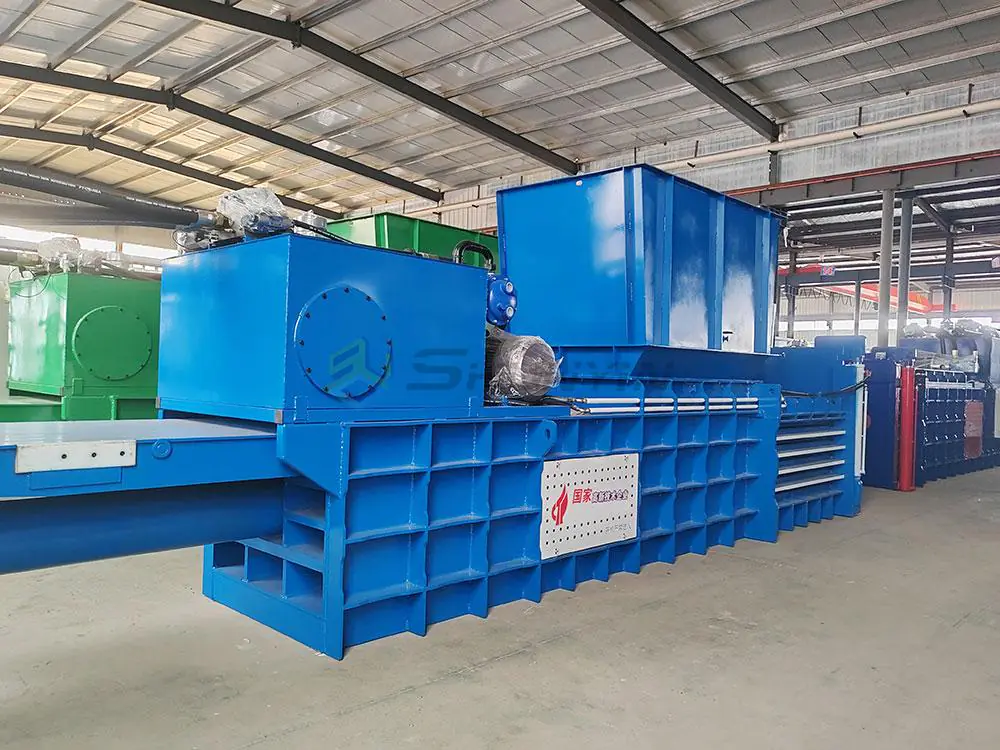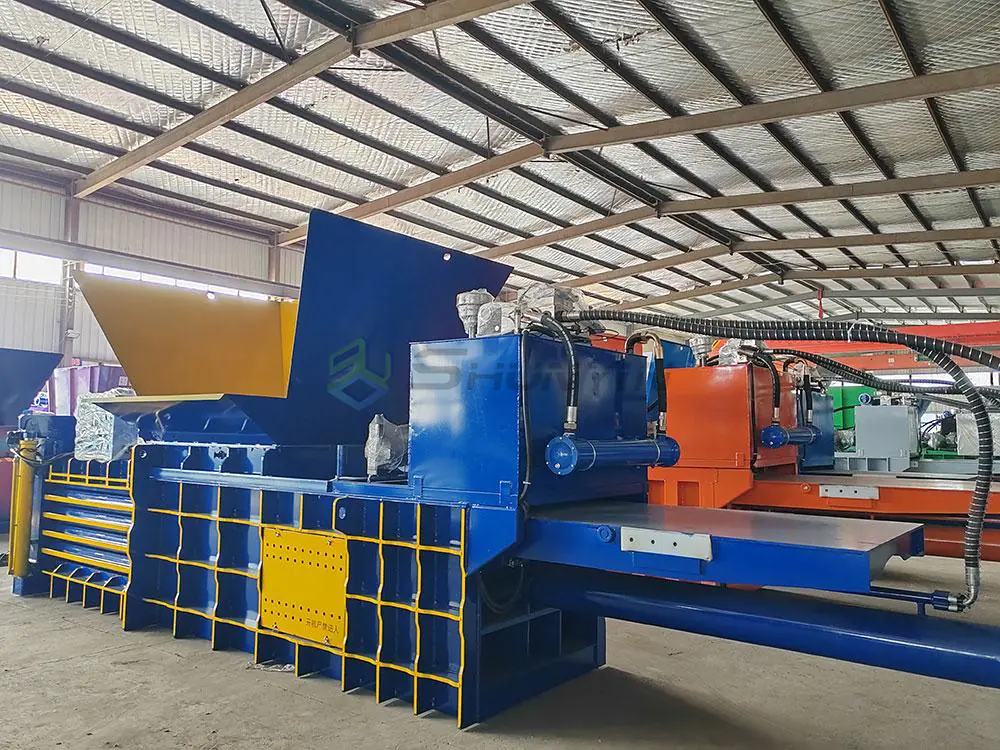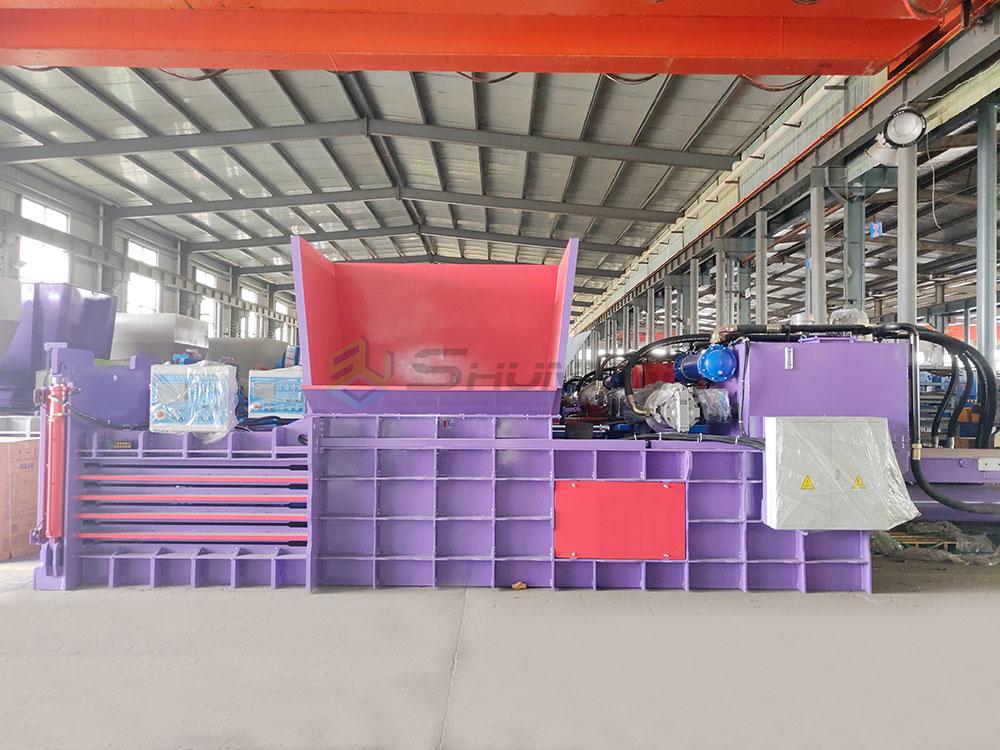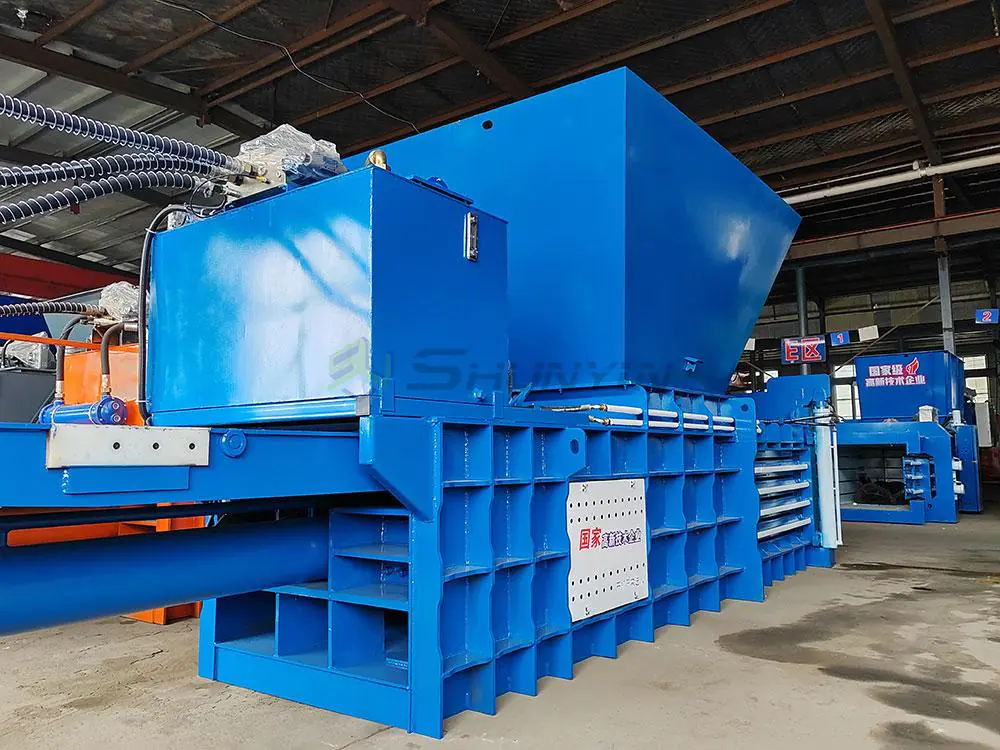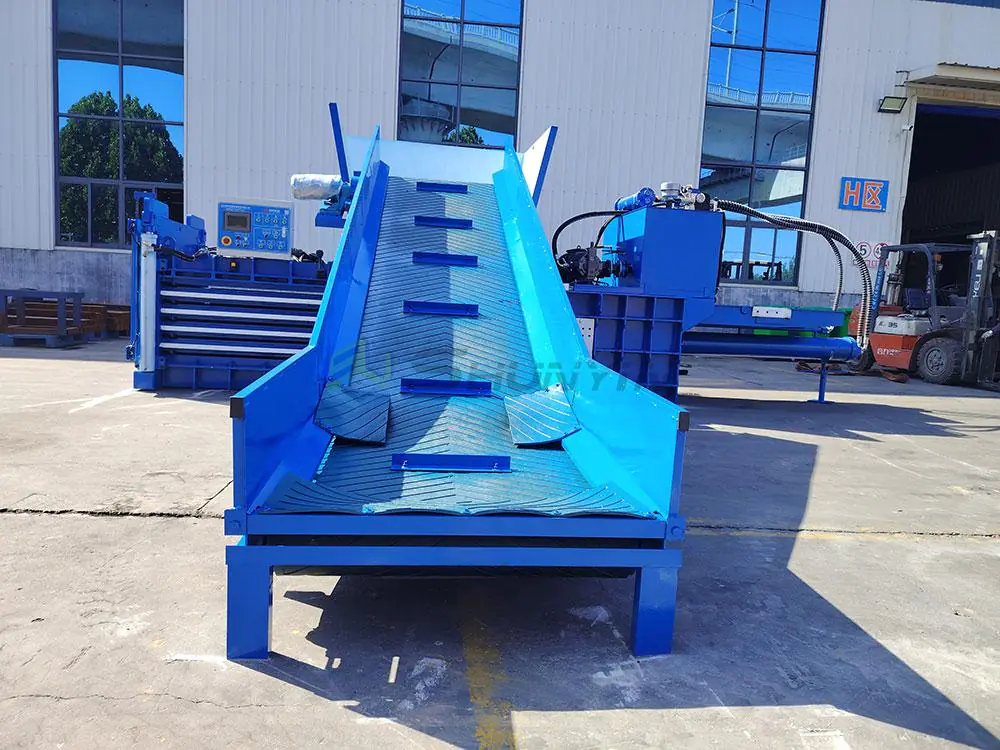
During last year’s installation in Osaka, our 88-ton hydraulic press converted 2.4 tons of loose plastic into sixteen perfectly square bales in 48 minutes – here’s the engineering magic behind this industrial powerhouse.
A hydraulic baling press machine uses pressurized oil (150-250 bar) to compress materials into dense blocks through adjustable steel rams. Our heavy-duty models generate 12-250 tons of force, process 5-32 tons/hour, and feature programmable logic controllers that ensure 91% energy efficiency – outperforming mechanical alternatives in throughput and maintenance costs.
Three technical aspects separate effective baling systems from costly mistakes. Let me explain how our Vietnamese client avoided $280,000 in annual losses through proper equipment selection.
What Is the Purpose of a Hydraulic Press Machine?

Our Canadian client Lambert upgraded from mechanical to hydraulic systems with these results:
Performance Comparison
| Parameter | Hydraulic Press | Mechanical Press |
|---|---|---|
| Force Range | 12-250 tons | 8-75 tons |
| Cycle Time | 18-90 seconds | 2-3 minutes |
| Energy Use | 0.8-1.2kWh/ton | 1.4-1.9kWh/ton |
| Noise Level | 72-85dB | 89-102dB |
| Maintenance Cost | $0.15/kg | $0.27/kg |
Unique hydraulic applications:
- Compressing toxic medical waste
- Processing irregular metal shapes
- Creating precise density certifications
- Automated oil drainage systems
What Is the Use of Baling Press Machine?

Singapore’s largest recycler processes 42 material types daily using these configurations:
Material Processing Matrix
| Material | Required Force | Bale Size | Revenue Increase |
|---|---|---|---|
| Aluminum Cans | 25t | 600x600x800mm | 28%↑ |
| Steel Shavings | 55t | 400x400x1200mm | 16%↑ |
| E-Waste | 32t | Flexible | 47%↑ |
| Textiles | 12t | 1000x1000x500mm | 31%↑ |
Critical industrial uses:
- OSHA-compliant waste compaction
- Export volume optimization
- Hazardous substance containment
- Automated material tagging (RFID/NFC)
What Is a Hydraulic Baler?

Our 35-ton model’s specs reveal core technical advantages:
Mechanical Breakdown
| Component | Specification | Function |
|---|---|---|
| Hydraulic Pump | 22kW 4-pole motor | Generates 160bar pressure |
| Ram Cylinder | 200mm bore ×1.2m | Creates 31.4t force |
| Valve Block | 4/3-way solenoid | Controls oil direction |
| Accumulator | 10-liter capacity | Stabilizes pressure |
| Oil Cooler | Water-to-oil 15kW | Maintains 45-55°C |
Operational superiority:
- 15-second emergency stop response
- 0.01mm precision pressure control
- Remote diagnostic interface
- Auto-lubrication every 120 cycles
What Is the Difference Between Hydraulic and Mechanical Press Machine?

Our Malaysian client’s maintenance logs show clear contrasts:
Technical Comparison Chart
| Feature | Hydraulic | Mechanical |
|---|---|---|
| Force Generation | Pressurized oil | Flywheel energy |
| Speed Control | Fully adjustable | Fixed ratios |
| Overload Safety | Pressure relief valves | Mechanical breaks |
| Noise Level | 72-85dB | 89-105dB |
| Lifespan | 12-15 years | 7-10 years |
| Floor Space | 7.3m² | 5.8m² |
Critical distinctions:
- ±0.5% force consistency (hydraulic)
- 23% higher throughput
- 41% lower vibration
- No clutch replacement costs
Conclusion
Modern hydraulic baling presses deliver unmatched precision in industrial recycling. With 17 patented technologies, our machines guarantee performance. Request your free force calculator – includes material-specific compression analysis.


